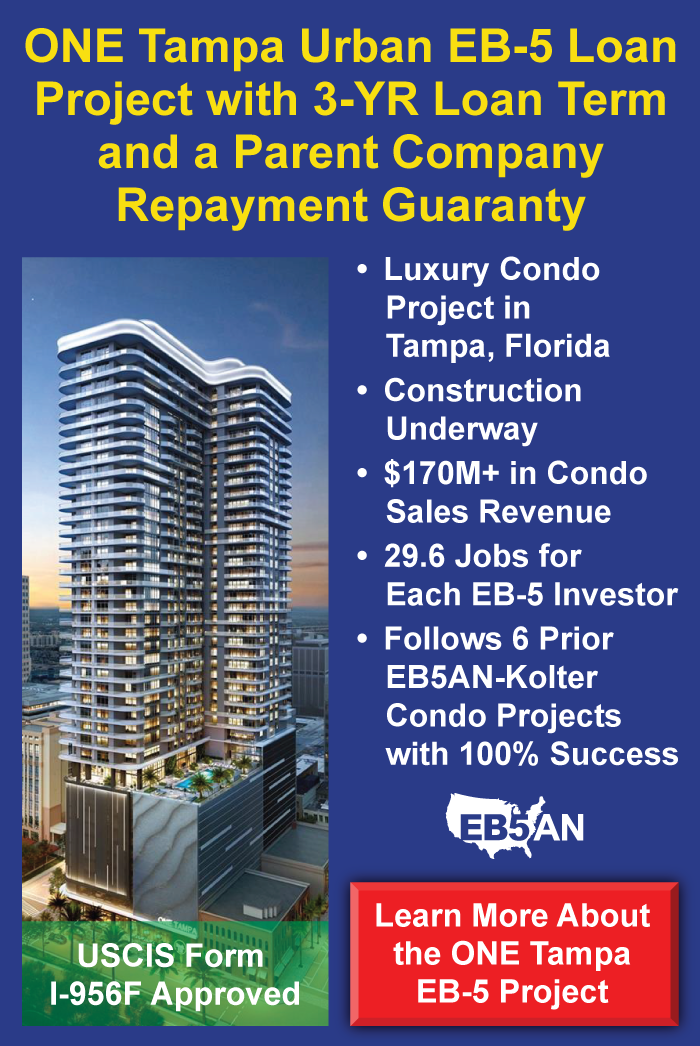Why are Hotel Construction Projects so Popular for EB5 Regional Centers?
New hotel construction is one of the most popular types of EB5 regional center investment today. The reasons behind this relate to the two primary goals for EB5 investors:
(1) Obtaining a Visa (with the highest chance of it becoming permanent) and
(2) Return of Investment Principal


Compared with other types of new real estate development projects, Hotel projects tend to create a high number of jobs per dollars invested given the construction spend and ongoing operations drivers of job creation. An increased number of jobs for the entire project translates into more jobs available on a per investor basis, and thus greater likelihood that the investor will receive a permanent Visa.
New hotels create substantial direct jobs during the operational phase and during the construction phase if construction lasts more than 24 months, and the USCIS Regional Center program allows projects to also count “indirect and induced” jobs determined through economic models such as RIMS II and Implan, approved by USCIS economists. EB-5 regional center investment projects can therefore take advantage of indirect and induced jobs created during both the construction phase (if longer than 24 months) and during the operational phase once construction is completed the hotel is operational.
In most deals today, EB-5 investor capital represents a small portion of the total capital required, but all project capital can be counted for the purposes of EB-5 investor job creation.
To illustrate, let’s say that a new hotel development project has a total of $100 million hard and soft construction budget which will create 900 direct and indirect jobs using USCIS approved economic models. Of this amount, 30% or $30M is from 60 EB-5 investors each contributing $500,000. This means that all 900 jobs can be divided on a pro-rata basis so that each of the 60 investors is allocated 15 jobs (900 jobs / 60 investors). This represents a “job cushion” of approximately 50 percent over the USCIS required 10 jobs per investor (15 vs 10 jobs). Investors who choose to invest in projects with a “job cushion” have a greater likelihood of their temporarily approved Visa’s becoming permanent at the I-829 stage years later.
Temporary Visa’s are made permanent by the USCIS after an investor has demonstrated that a minimum of 10 jobs over 2 years has actually been created by his/her investment in the EB-5 project. If the total construction spend decreased during the course of the project or the amount of operational revenue expected from the project was lower than expected, the number of jobs created by the project would be lower than projected.
Investors who select projects where there is no “job cushion” may run into issues at I-829 approval if the project they invested in did not create the required number of 10 jobs over 2 years after the decreases in construction spend and operational revenue were taken into account.
Therefore, investors considering an investment in an EB-5 project should always take into account not only the projected total job creation of the project, but also the “job cushion” to maximize the likelihood of receiving a permanent Visa as a result of their investment.
From a revenue perspective, hotel projects are also perceived to be relatively safe in the marketplace for return of capital compared with other EB-5 project types. Most foreign investors believe that they understand the revenue model of a hotel, and are confident that they can recognize a quality location that they recognize and a well-respected hotel brand/operator associated with a given project.
Due to our extensive experience in the hotel space, EB5AN has developed proprietary legal and economic structures for EB5 hotel projects under regional centers looking to raise EB5 investment capital. Our team has worked with major hotel development companies and international hotel brands on projects across the United States.










